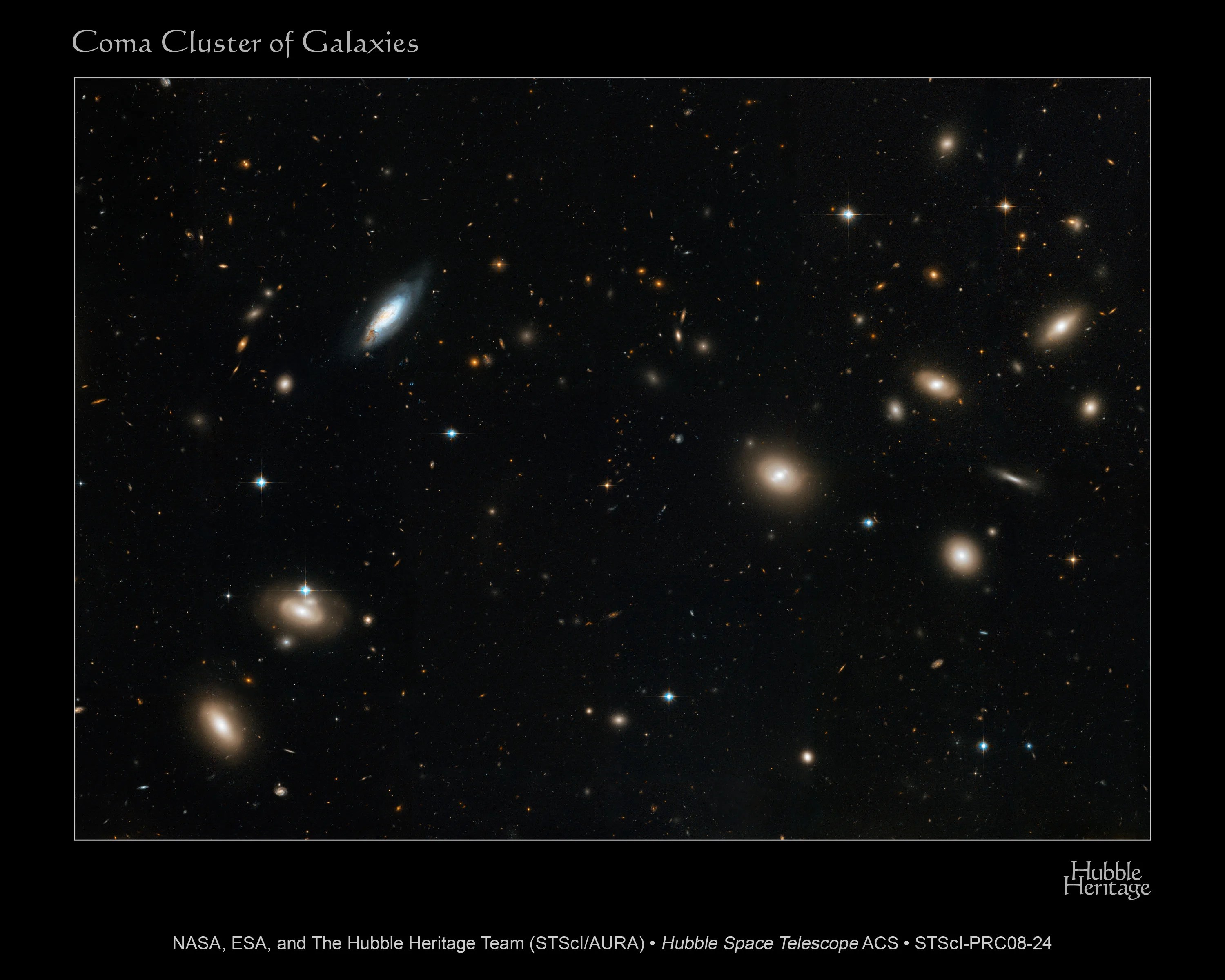3 min read

Release No.: STScI-PRC08-24
Credit:
NASA, ESA, and the Hubble Heritage Team (STScI/AURA)
Acknowledgment:
M. Carter (Liverpool John Moores University) and the Coma HST ACS Treasury Team
NASA's Hubble Space Telescope captures the magnificent starry populationof the Coma Cluster of Galaxies, one of the densest known galaxycollections in the universe.
The Hubble's Advanced Camera for Surveys viewed a large portion of thecluster, spanning several million light-years across. The entire clustercontains thousands of galaxies in a spherical shape more than 20 millionlight-years in diameter.
Also known as "Abell 1656," the Coma Cluster is more than 300 millionlight-years away. The cluster, named after its parent constellation ComaBerenices, is near the Milky Way's north pole. This places the ComaCluster in an area unobscured by dust and gas from the plane of theMilky Way, and easily visible by Earth viewers.
Most of the galaxies that inhabit the central portion of the ComaCluster are ellipticals. These featureless "fuzz-balls" are pale goldishbrown in color and contain populations of old stars. Both dwarf, as wellas giant ellipticals, are found in abundance in the Coma Cluster.
Farther out from the center of the cluster are several spiral galaxies.These galaxies have clouds of cold gas that are giving birth to newstars. Spiral arms and dust lanes "accessorize" these brightbluish-white galaxies that show a distinctive disk structure.
In between the ellipticals and spirals is a morphological class ofobjects known as S0 (S-zero) galaxies. They are made up of older starsand show little evidence of recent star formation, however, they do showsome assemblage of structure -- perhaps a bar or a ring, which may giverise to a more disk-like feature.
This Hubble image consists of a section of the cluster that is roughlyone-third of the way out from the center of the cluster. One brightspiral galaxy is visible in the upper left of the image. It isdistinctly brighter and bluer than galaxies surrounding it. A series ofdusty spiral arms appears reddish brown against the whiter disk of thegalaxy, and gives rise to the idea that this galaxy has been disturbedat some point in the past. The other galaxies in the image are eitherelliptical, S0 galaxies, or background galaxies far beyond the ComaCluster sphere.
The data of the Coma Cluster were taken as part of a survey of a nearbyrich galaxy cluster. Collectively they will provide a key database forstudies of galaxy formation and evolution. This survey will also help tocompare galaxies in different environments, both crowded and isolated,as well as to compare relatively nearby galaxies to more distant ones(at higher redshifts).
The Hubble Space Telescope is a project of international cooperationbetween NASA and the European Space Agency (ESA) and is managed byNASA's Goddard Space Flight Center (GSFC) in Greenbelt, Md. The SpaceTelescope Science Institute (STScI) conducts Hubble science operations.The institute is operated for NASA by the Association of Universitiesfor Research in Astronomy, Inc., Washington, DC.
For more information on this story, contact:
Ray Villard
Space Telescope Science Institute, Baltimore, Md.
410-338-4514
Lars Lindberg Christensen
Hubble/ESA, Garching Germany
011-49-89-3200-6306







